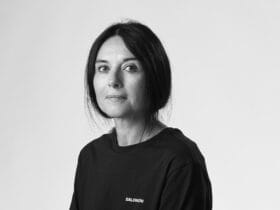Every shoe store has its own story, every store its own strategy. The ranges differ depending on the clientele and location. In addition, each owner shapes his or her company in his or her own personal way. And yet there seem to be certain rules when shoe retailers decide to expand their range to include textile fashion. In most cases, the trigger for expanding the range is the experience that you quickly reach your limits with shoes alone. Susanne Nowak felt the same way. “At some point I got the feeling that I couldn’t get anywhere with just shoes,” remembers the owner of the high-quality shoe and fashion store Classica in Würzburg. Once the decision has been made to also carry fashion in the future, the question arises as to which product groups should be used to lay the foundation for expanding the range. Very often – and this is the second common denominator – the choice falls on knitwear, which is undoubtedly a wise choice. Of all the product groups, knitwear is probably the most rewarding category when it comes to buying and selling: a sweater is uncomplicated in terms of fit and, compared to a shoe, is often sold in no time. It’s easy to take it with you, even if you actually had no intention of buying it. In addition, a sweater does not take up much space in the warehouse (or in the customer’s closet). So it was obvious for Susanne Nowak to start with Masche, but in the luxury version. “I started with Johnstons of Elgin,” explains the trained medical assistant, who found her way into retail through working in a friend’s shop. The Scottish cashmere label can be found in the first stores and is correspondingly expensive; to this day it is one of their most important suppliers.
Was it always clear to Susanne Nowak that she would find happiness in the upscale genre? “Not from the beginning,” she explains. At first, when she was still purely a shoe dealer, she sometimes sipped the commercial genre and sometimes the upscale genre, “until I was advised to choose between expensive and cheap”. Since she “would never be able to compete with the very cheap shoe stores,” she opted for the high-quality rail. And so consistently that she “added Prada after almost five years.” The brand quickly becomes the driving force for its customers, the “handful of ladies in Würzburg who don’t have to worry about money”. Now everything has its time. Prada’s time was over when the company decided years ago to sell its products primarily in its own flagship stores. For Susanne Nowak this was a turning point. She had to reorient herself. Today, “I’m no longer so focused on big names,” she says. More important to her are quality, value or the fact that the supplier “is a family business”. In general, the human aspect, “I attach great importance to that”, she has to “like the people” she deals with, this also applies to the collaboration with her agencies. “Many agencies are happy to sell – but if there is a problem, you are left alone,” says Nowak. She appreciates working together “with the two or three agencies with whom I have been working for a long time and with whom I also feel in good hands as a person” all the more. She knows that “they are looking for beautiful things and new things for me there”. This input is very important to her, especially since “there is no longer a real trade fair and it has become more difficult to find a new product”. Although she visits the Supreme in Munich and works her way through the showrooms in Milan, she still lacks the inspiration of a large industry meeting.






Leave a Reply